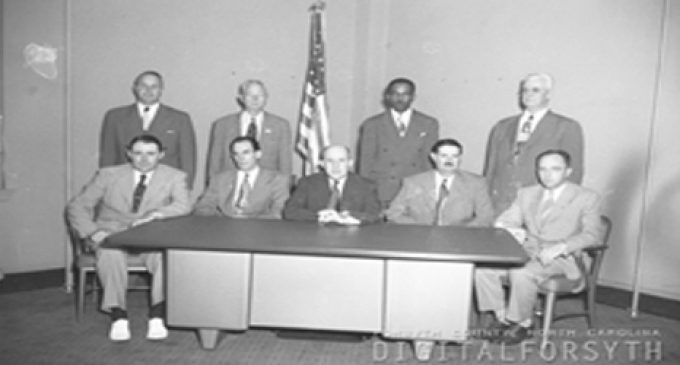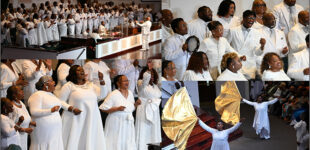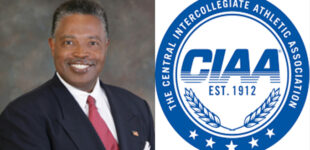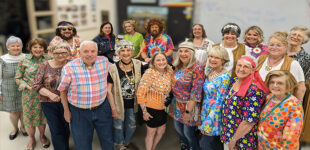Looking Back

Residents point to significant local black history events over the last 100 years
The city’s four-day Centennial Celebration, which began today (Thursday, May 9) has been cause for much reflection, as members of the Twin City look back on the events that brought two very different towns together as one in 1913.
For history buffs in the African American community, the centennial offers a golden opportunity to look back on the contributions of local African Americans, and the impact of their presence on the shaping of this city. Cheryl Harry, director of African American Programming at Old Salem Museums and Gardens, said Winston-Salem was once home to a thriving community of black professionals. Plentiful job opportunities at tobacco giant R.J. Reynolds drew African Americans to the community, and with the tobacco workers came a growing need for professional goods and services, said Harry, who recently authored a book, “Winston-Salem’s African American Legacy.”
“I mentioned in the book that we rivaled any black Wall Street,” she said. “For me, I look back and see a business community of people that were actually being really profitable and making society better for African Americans and I think we don’t see that a lot or remember that a lot about that time period. To me, that’s important.”
The first half of the century saw the arrival of a variety of new organizations and services for the black community, including the establishment of local YMCA and YWCA branches in 1911 and 1918, respectively. The first black library on Chestnut Street in 1927 and the founding of the Kate B. Reynolds Memorial Hospital in 1938. Winston-Salem was also home to the famed Safe Bus Company, which was one of the few black-owned bus companies in existence at the time of its founding in 1926.
Old Salem will open its doors to the public during its Centennial Celebration Community Day on Saturday, offering free admission and special activities to highlight the centennial, and the rich history of Salem, which dates back to 1765. The neighboring Happy Hill community also played an important role in local African American history, as one of the first communities in the area established by freedmen.
City native Annette Scippio, the former executive director of Leadership Winston-Salem, acquired a wealth of knowledge about the city through research she conducted on behalf of the Society for the Study of Afro-American History in Forsyth County in the 1980’s. Scippio grew up in the historic Reynoldstown neighborhood, which was constructed on land RJR purchased in 1917 to create housing for its employees. The bulk of the once-prosperous neighborhood fell victim to urban renewal 50 years later, Scippio said.
“It was beautiful,” she said of the community. “That’s my only regret, how that was done, but that was a national effort that everybody got caught up in.”
The Depot Street area was also a vibrant community, punctuated by Goler Memorial AME Zion Church and Lloyd Presbyterian, both of which are still standing today, Scippio said. The area had two black-owned movie theaters and a host of retailers.
“Third Street was the beginning of the segregated shopping area and all of the black businesses were in that area, where the Philips Building now sits. All the other part was factories,” she stated. “Blacks were recruited to come and work in the factory. At one point at RJR, 60 percent of its labor force was black.”
The labor force at RJR sparked a national labor movement in the 1940. In the decades that followed, integration brought changes to the black community, both positive and negative, Scippio said.
“I would say in our hearts we (African Americans) were prepared to embrace integration,” remarked the mother of two. “I don’t think the other side was prepared to receive us. We’re still wounded in that area.”
When Dr. Virginia Newell looks back on local black history, she needs only to draw from her own memory as one of the city’s first black Aldermen. The late Kenneth R. Williams, a former chancellor at Winston-Salem State University, paved the way, becoming the first African American alderman of the modern era when he was elected to the local Board of Aldermen in 1945. Newell said she and her colleagues, current Mayor Pro Tempore Vivian Burke and Larry Little, fought hard for the black community, demanding more black hires and leadership in city departments.
“We pushed for everything,” said the grandmother of six. “It was a turning point when we got enough (African American) people on the board.”
Newell, a retired educator, said one of the most important victories the aldermen secured during her tenure was the naming of the Lawrence Joel Veterans Memorial Coliseum. The facility is named for a black Medal of Honor winner who was born and raised in Winston-Salem.
Despite its challenges, from its founding from two cities into one, Winston-Salem, which she says was once the largest city in North Carolina, has represented a spirit of unity, said Newell, one of three Centennial Commission Chairpersons.
“When people get together, they love each other. They know that we’re so much more alike than different,” she surmised. “In the South, they have kept blacks and whites from getting together and when we do, the city becomes a good city, because you can work together, and that is what I value.”
Centennial Planning Commission member Mark Maxwell said members of the Planning Commission were deliberate in their efforts to honor every aspect of the city’s history and leaders of every color and creed, from George Black, an internationally known brick maker, to Simon Green Atkins, founder of WSSU and the local chapter of the Black Panther Party, which had its own ambulance service, and pay homage to the things that make the city as a whole special, such as being the birthplace of the first Arts Council in the nation.
“Winston-Salem is an amazing community; often we think it’s necessary to travel hundreds of miles to to experience culture, but if we take a few days and go Thursday through Sunday, we’re going to get the flavor of our community,” he said. “By being a part of this, I think we’ll all walk away as better ambassadors for our community.”
For a full schedule of events, visit www.ws100years.com.
















